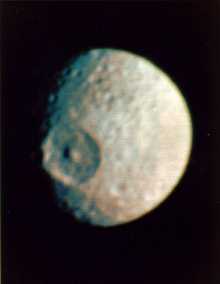This is an image of Mimas.
Click on image for full size
NASA/JPL
Mimas
Mimas was first discovered by W. Herschel in 1789. Mimas is the 6th closest moon to Saturn.
Mimas is one of the icy moons, similar to the Galilean satellites.
Mimas is about as long as the distance from Los Angeles to San Fransisco.
The main characteristic of Mimas is the fact that it looks like the "Death Star" from "Star Wars".
You might also be interested in:
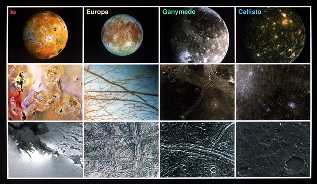
The Galilean satellites are the 4 big moons of Jupiter, Io, Europa, Ganymede, and Callisto. These moons are called Galilean because they were discovered by Galileo Galilei in 1610. In this picture, Io,
...more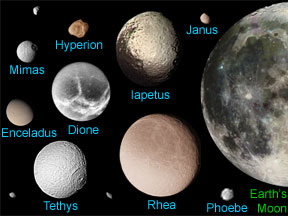
Saturn has // Call the moon count function defined in the document head print_moon_count('saturn'); moons. Many of those are tiny chunks of rock or ice only a few kilometers (miles) across. One of Saturn's
...more
Saturn has // Call the moon count function defined in the document head print_moon_count('saturn'); moons. Many of those are tiny chunks of rock or ice only a few kilometers (miles) across. One of Saturn's
...more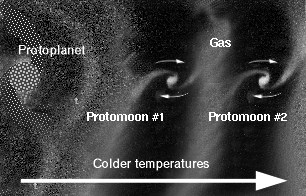
Titan is like other icy moons. Scientists want to know "how come Titan is the only one that has a big atmosphere?" Titan formed the same way other planets did, as shown in this picture. Where Titan formed,
...more
The air of Titan is a lot like the Earth's, except that it is very cold, from -330 degrees to -290 degrees! Like the Earth, there is a lot of Nitrogen and other complex molecules. There also may be an
...more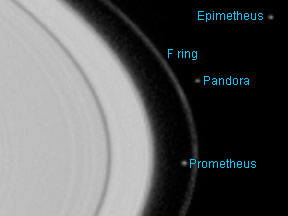
Pandora is a small moon of Saturn. It was discovered by S. Collins and others in 1980 from photos taken by the Voyager 1 spacecraft. Pandora's name comes from Greek mythology. Pandora was the first woman,
...more
Prometheus is a small moon of Saturn. It was discovered by S. Collins and others in 1980 from photos taken by the Voyager 1 spacecraft. This moon's name comes from Greek mythology. Prometheus was a Titan
...more


